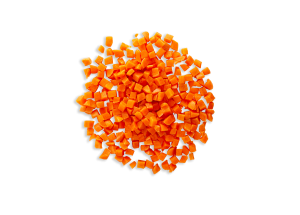A hidden gem!
As we age, eating well takes on new significance. Requirements for many nutrients increases.
However, due to several changes that occur during our older years, older adults may find it more challenging to meet their nutrient needs than ever before. While appetite and energy requirements decrease, there can be also be a reduced ability to purchase and/or prepare foods independently in the home. Combined with age-associated changes to dentition (affecting the ability to chew and swallow), taste and smell, all these factors can all influence food intake and the ability for older adults to get all the nutrients they need. Therefore, it important to make every eating occasion count, by providing as much nourishment as possible.
Enter the mighty kumara!
Kumara Nutrition for Older Adults
This often-underrated vegetable has been a staple of the Kiwi diet, dating back to the 10th century when Māori first arrived in New Zealand. While we often only think of kumara’s carbohydrate content when it comes to nutrition, kumara provides a range of health promoting nutrients, which are important as we age:
Carbohydrate:
Being one of the most carbohydrate rich vegetables, kumara is an excellent source of energy. Kumara has a lower Glycaemic Index (GI) than potatoes. This means the energy (in the form of glucose) from kumara is released more slowly – giving less of a sugar spike – compared to potatoes.
Fibre:
Kumara is a source of fibre. As we age, it’s important to eat a diet rich in fibre to help alleviate constipation and keep you regular. Including plenty of dietary fibre may also help to keep your heart healthy. When increasing fibre intake, also make sure to drink enough fluids throughout the day.
Potassium:
Watch out bananas, kumara are also a rich source of potassium. To help support the health of your heart, it is recommended you ensure you’re getting enough potassium, along with reducing your salt intake. However, those with kidney disease can find too much potassium harmful and will need to be mindful of how much potassium they have in a day.
Vitamin A and C:
Kumara is a good source of vitamin C and beta-carotene. These powerful antioxidants can help to support our immune system. As we age, our immune systems don’t work as effectively as they once did. Therefore, having a diet rich in antioxidants, is just as important as ever to help keep older adults healthy and well. Vitamin A can also support our vision, which can decline as we age.
B Vitamins:
Our requirements for many B vitamins increase as we age. While B vitamins are often thought about for the roles they play in energy production, vitamin B deficiency has been linked to heart disease, cognitive dysfunction, and osteoporosis in older adults. The good news is that kumara is a source of B vitamins. Depending on the variety, this includes thiamine, niacin, riboflavin, and vitamin B6.
Phytonutrients:
Each beautiful colour of kumara, provides us with a different array of phytonutrients. Anthocyanins are a group of phytonutrients which are found in the skin of red and purple kumara varieties. Kumara with orange and yellow skins and flesh, are rich in beta-carotene. These phytonutrients have antioxidant and anti-flammatory activity which can help to keep us healthy by supporting our immune system and overall function of our body.
How can I include kumara in my residents’ meals?
To cut the hassle out of food prep, Kumara Portions and Diced Kumara are both convenient products, which make it easy to include the kumara into meals for your residents are aged care or retirement homes.
Use kumara as a replacement for potato in your favourite recipes. Some quick and easy ways to include kumara are:
- Use kumara in mash in place of potato. Kumara mash can be included as a side or as the topping for Shepard’s or other pies.
- Add kumara into casseroles, soups, and pies.
- Baked/microwaved stuffed kumara in its jacket. Fill with baked beans or vegetable mince, topped with sour cream and cheese.
The Eating and Activity Guidelines recommend adults over the age of 70 aim to eat at least 5 serves of vegetables every day. Half a medium piece of kumara is equivalent to 1 serve of vegetables.





